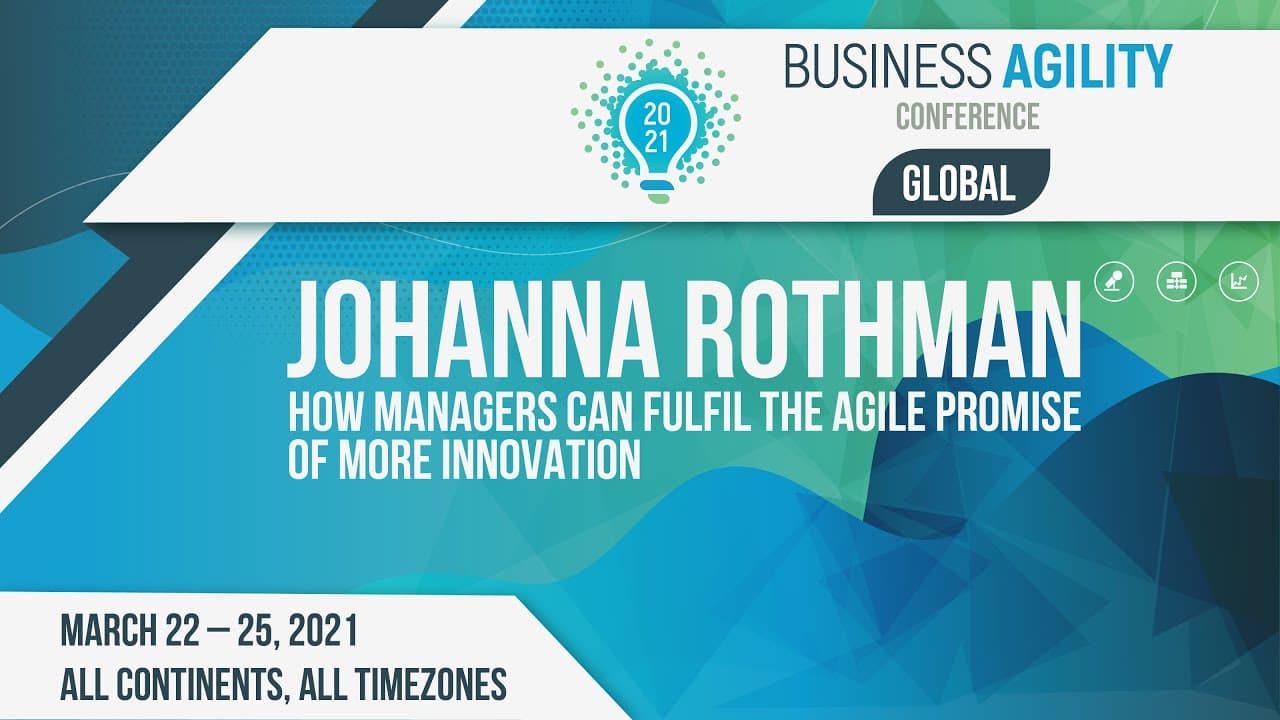I have decided I would like to be known as a thought provoker, not necessarily a thought leader. So, I will leave you with that and hope that I provoke some thoughts today.
When I think about the Agile promise of more innovation—if we have short feedback loops—how do we make that happen inside the organization? For me, this is all about management innovation.
Agile Transformation Story
Let me give you a quick Agile transformation story. A senior leader says, "We need a transformation!" That means everybody else gets training, right? So, they start with the teams. They train them. It doesn’t matter which framework they use; they choose a framework, everybody gets trained, and then they're supposed to do Agile by the book.
They have this framework—no deviation from it. I'm not so sure that's an Agile transformation at all. I'm not sure it's a transformation at all, except that it might help the teams that do the work. But notice, there's no adaptation of any of the systems inside the organization. I don’t see how you do that.
If you only provide education and training for the teams, that’s just the tip of the iceberg. All the cultural shifts have to happen deeper in the organization. The way we make that happen is with management innovation. When we innovate management systems, we can create and refine an Agile culture.
Three Myths That Stifle Innovation
I’m going to talk about three myths—only three—that stifle innovation:
- The belief that we need to standardize everything and have people work in a rigid, uniform way.
- The idea that 100% utilization of people works.
- The assumption that performance management creates employee engagement.
Every time I hear "install a framework," a little Agile angel dies. I hope you’re rolling your eyes a little bit. I’ll try to refrain from rolling mine.
Myth 1: One Standard Agile Process
In my story, the senior leadership truly believed that installing a single framework for all teams would work. That would mean all teams look the same, like these identical bottles on a shelf. They might do slightly different things, but ultimately, they are expected to follow the same process.
The problem? I don’t know of any organization where all teams have the same work and the same pressures.
For example, in one organization, some teams do iteration-based work and find Scrum really helpful. They appreciate the rhythm of iteration, they’ve learned to size their stories well, and they can predict their work effectively. Scrum fits them.
But in the same organization, another team is doing production support. They can’t use an iteration-based approach. They need to be able to drop everything and respond to urgent issues. Not every team can use the same approach.
Organizations need to stop pushing standardization and instead focus on the business outcomes each team or department is trying to achieve. Instead of saying, "Use this framework," they should ask, "What’s the best approach for this team to deliver value?"
Myth 2: 100% Utilization of People Works
Look at this picture of a traffic jam. This is what 100% utilization looks like. The highway has become a parking lot—no movement, no flow. That’s what happens when organizations try to maximize resource efficiency instead of optimizing for flow.
In many organizations, we think, "If everybody is busy, we’ll get more work done." But that’s not how it works. When we optimize for outputs, not outcomes, we lose sight of what actually matters.
Instead, we need to optimize for deliverables and value. That means:
- Focusing on the flow of work, not just individual people.
- Reducing handoffs and wait states.
- Ensuring teams can actually complete work instead of juggling multiple unfinished tasks.
We need to move from resource efficiency to flow efficiency.
Myth 3: Performance Management Creates Engagement
Performance management doesn’t work—and it certainly doesn’t create engagement.
Ranking employees? Comparing teams? That’s ridiculous. People and teams do different work. We can’t compare them in a meaningful way.
Instead of ranking people and focusing on individual performance, organizations should focus on team-based goals. When we emphasize autonomy, mastery, and purpose, people become motivated to do great work.
Creating True Agility
To build true business agility, organizations need to focus on three things:
- Creating and working toward an overarching goal.
- Running small experiments to optimize learning.
- Encouraging collaboration across the organization.
When we embrace management innovation, we optimize for change instead of just trying to "manage" it. We stop clinging to rigid frameworks and start adapting to the needs of the business and its customers.
I always put this in my slides because I really want to stay in touch with you. And with that, I will stop the share.



